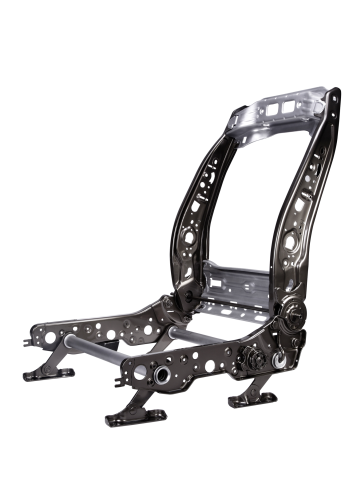
The project, called CAMISMA (Carbon fibre / amid- /metallic structural interior component using a multi-material approach), is supported by the German Federal Ministry of Education and Research (BMBF). The project funds research that seeks to replace steel and light alloys with fibre reinforced composites, including carbon fibre, in automotive designs.
Organisations working with Johnson Controls, a specialist in automotive seating, interiors and electronics, include German organisations Evonik Industries, Jacob Plastics GmbH, Toho Tenax Europe GmbH and the Technical University Aachen.
The CAMISMA project has an initial timeline of 3 years.
"As a result of climate change and the declining reservoir of fossil fuels, a key challenge for the automotive industry is to develop fuel-efficient and low-emission vehicles," says Dr Andreas Eppinger, vice president technology management at Johnson Controls Automotive Experience.
"Vehicle weight is a key factor in determining fuel consumption, so it is important for projects like CAMISMA to help accomplish this goal."
New materials and design approaches
The CAMISMA project focuses on using multi-material systems in lightweight designs. Traditionally, using thinner sheets of steel reduced component weight. This technology cannot be further developed so the need for new materials and design becomes more important.
The CAMISMA project focuses on the use of fibre reinforced plastics, particularly those based on carbon fibre, to replace steel.
The CAMISMA project also seeks to address the challenges of using composites, including cost and longer production cycles.
"We are pursuing ways to make high volume production economically feasible," reports Dr Matthias Berghahn of Evonik Industries, one of Johnson Controls' project partners.
Seat structure
An automotive seat is being developed, manufactured and tested as part of the CAMISMA project. The objective is to achieve more than a 40% weight reduction compared to conventional metal-based designs.
Johnson Controls recently announced a production-ready version of a rear seat backframe that incorporates adhesive bonded steel and aluminium components.
"With this design we reduced the weight by more than 30% compared to conventional steel designs," notes Johnson Controls' Eppinger. "We will continue to develop additional alternative, even lighter weight materials, with our partners in the CAMISMA project."





